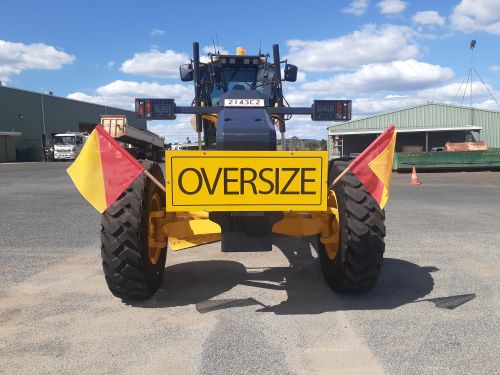The South Burnett Regional Council, a large local government entity in Queensland, Australia, has faced significant challenges in managing its fleet. At the IPWEA Fleet Management Training Day in Brisbane earlier this month we explored the experiences and strategies of two key members of the Council’s fleet management team: Anthony Bills, the Manager of ICT and Fleet, and Brandon Orchard, the Coordinator of Plant and Fleet. Through their insights, we delve into the complexities of managing a diverse fleet in a regional setting, including the procurement of vehicles, the integration of local suppliers, and the adaptation to emerging technologies.
Background
South Burnett Regional Council services six main centres, with Kingaroy being the largest. The Council manages a fleet of approximately 350 units, ranging from heavy machinery such as graders and trucks to smaller equipment used for parks and waste management. The fleet supports a range of essential services, including road maintenance, parks and gardens, and waste management.
Challenges in Fleet Management
Both Anthony and Brandon highlighted the challenges inherent in managing such a diverse fleet. Anthony, who transitioned from managing ICT to fleet management as part of a Council restructuring, described the steep learning curve he faced. His background in ICT initially seemed unrelated, but he quickly realised that the principles of asset management could be applied across different domains, including fleet management.
Brandon, who began his career as a diesel fitter apprentice with the Council, has spent the last 14 years working his way up to his current role as Fleet Coordinator. His journey from tradesman to fleet management provided him with a deep understanding of the practical challenges faced by the team. One of the most significant issues they have had to address is the problem of rust in the fleet’s water trucks. This issue has been so severe that it has necessitated the complete replacement of chassis rails in some vehicles. To combat this, the Council has implemented new specifications for their water trucks, including full galvanisation, electronic rust control, and enhanced cleaning schedules.

Procurement and Local Engagement
One of the unique aspects of South Burnett’s approach to fleet management is its emphasis on engaging local suppliers. Anthony pointed out that while supporting local businesses is a priority, it sometimes leads to challenges. Local suppliers, though integral to the community, may experience limitations not faced by larger manufacturers, leading to issues that arise later in the vehicle’s lifecycle. This balance between supporting local businesses and ensuring the highest quality of service is a delicate one that the Council navigates carefully.
Brandon also discussed the complexities of procuring heavy machinery, such as graders and water trucks. The Council’s procurement process is not only about selecting the best equipment but also ensuring it meets the specific needs of their operations. The delays in the delivery of trucks, sometimes extending up to 18 months, have been a significant pain point, reflecting the broader supply chain challenges faced by regional councils across Australia.
Adapting to Emerging Technologies
While South Burnett Regional Council is not yet fully embracing electric vehicles (EVs) and other low-emission technologies, the conversation is ongoing. Anthony noted that the Council is aware of the impending need to address carbon emissions, particularly as it relates to their fleet. However, the current focus is on infrastructure readiness, including the potential for solar power and battery storage at Council facilities, which could support EVs in the future.
Brandon added that, while low-emission fuels and sustainability are considered during the procurement process, they are not yet a primary driver of decision-making. The Council does evaluate fuel efficiency as part of its whole-of-life cost assessments, but the transition to more sustainable options will likely depend on broader infrastructure developments and the availability of suitable vehicles for the Council’s specific needs.
South Burnett Regional Council’s approach to fleet management is a testament to the complexities and challenges of managing a diverse fleet in a regional setting. Anthony and Brandon’s experiences highlight the importance of balancing local engagement with the need for specialised expertise, the necessity of adapting to emerging technologies, and the ongoing challenge of maintaining and procuring essential vehicles and equipment. As the Council continues to navigate these challenges, its commitment to innovation and community engagement will be crucial in ensuring the long-term sustainability and efficiency of its fleet.













